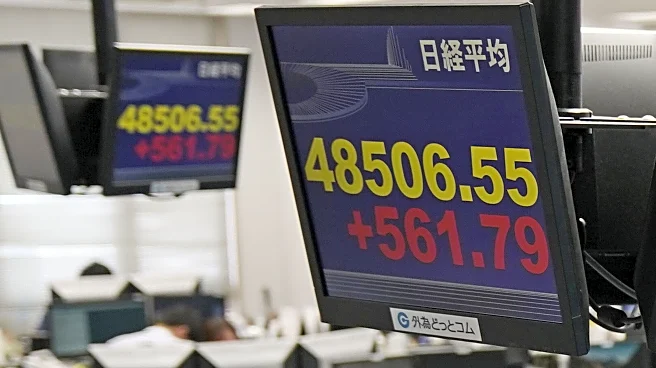What's Happening?
The GEP Global Supply Chain Volatility Index has revealed a significant increase in factory purchasing activity in Asia, particularly driven by China, marking the strongest growth since June 2022. This surge has pushed Asia's supply chains to near-full utilization. In contrast, North American manufacturers have experienced a slowdown due to tariff-related disruptions and concerns about the economic outlook, leading to reduced purchasing and inventory buffers. European supply chains also remain underutilized, with countries like Germany, France, and Italy reporting decreased procurement activity. The index, which tracks demand conditions, shortages, transportation costs, inventories, and backlogs, remained relatively unchanged in September, indicating that global supply chains are still operating below full capacity.
Why It's Important?
The contrasting trends in manufacturing activity between Asia and North America highlight the shifting dynamics in global supply chains. The robust purchasing activity in Asia, led by China, suggests a strong production and sales growth, which could bolster the region's economic position. Meanwhile, the slowdown in North America reflects ongoing challenges such as tariff pressures and economic uncertainty, which could impact manufacturing output and economic growth. These developments are crucial for supply chain leaders who need to adapt their strategies to navigate the 'new normal' of higher prices and slower growth. The data underscores the importance of strategic planning and execution in maintaining competitive advantage and operational efficiency in a volatile global market.
What's Next?
As global supply chains continue to face challenges, manufacturers and supply chain leaders are urged to execute revised strategies to adapt to the current conditions. The next release of the GEP Global Supply Chain Volatility Index is scheduled for November 12, 2025, which will provide further insights into the evolving supply chain dynamics. Stakeholders will be closely monitoring these trends to make informed decisions about procurement, inventory management, and production planning. The ongoing tariff-related disruptions and economic concerns in North America may prompt policy discussions and strategic adjustments to mitigate their impact on manufacturing activity.
Beyond the Headlines
The current supply chain dynamics may lead to long-term shifts in global manufacturing strategies, with companies potentially increasing their reliance on Asian suppliers due to their robust purchasing activity. This could influence global trade patterns and economic relationships, as regions adapt to the changing landscape. Additionally, the persistent challenges in North America and Europe may drive innovation in supply chain management and technology adoption to enhance resilience and efficiency. Ethical considerations around tariff policies and their impact on global trade may also come to the forefront, prompting discussions on fair trade practices and international cooperation.












